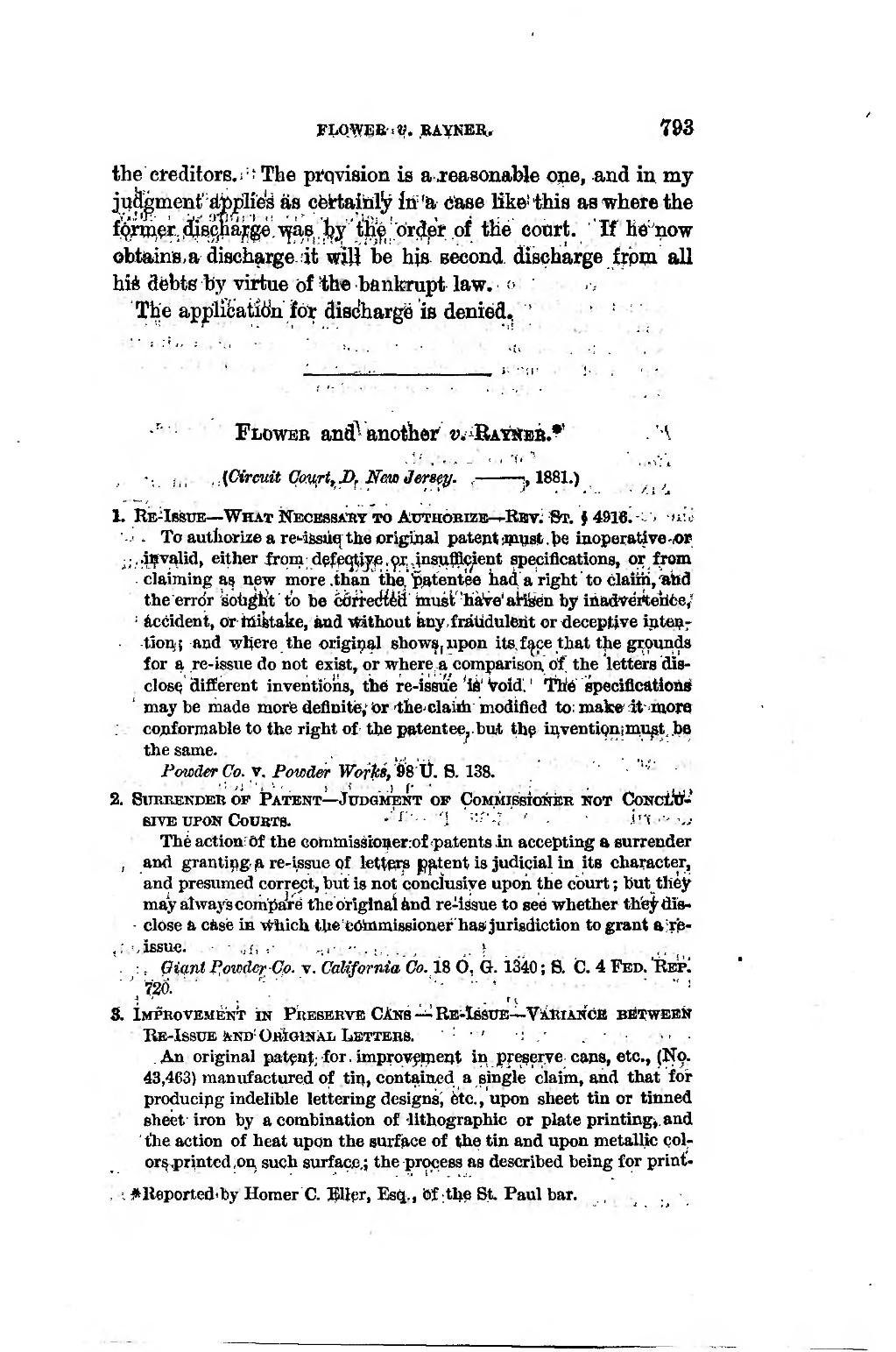the creditors. The provision is a reasonable one, and in my judgment applies as certainly in a case like this as where the former discharge was by the order of the court. If he now obtains a discharge it will be his second discharge from all his debts by virtue of the bankrupt law.
The application for discharge is denied.
FLOWER and another v. RAYNER [1]
(Circuit Court, D. New Jersey. 1881.)
1. RE-ISSUE WHAT NECESSARY TO AUTHORIZE-REV. ST. 4916.
To authorize a re-issue the original patent must be inoperative.or invalid, either from defective or insufficient specifications, or from claiming as new more than the patentee had a right to claim, and the error sought to be corrected must have arisen by inadvertence, accident, or mistake, and without any fraudulent or deceptive intention; and where the original shows, upon its face that the grounds for a re-issue do not exist, or where a comparison of the letters disclose different inventions, the re-issue is void. The specifications may be made more definite, or the claim modified to make it more conformable to the right of the patentee, but the invention must be the same.
Powder Co. v. Powder Works, 98 U. S. 138.
2. SURRENDER OF PATENT-JUDGMENT OF COMMISSIONER NOT CONCLUSIVE UPON COURTS.
The action of the commissioner of patents in accepting a surrender and granting a re-issue of letters patent is judicial in its character, and presumed correct, but is not conclusive upon the court; but they may always compare the original and re-issue to see whether they disclose a case in which the commissioner has jurisdiction to grant a re-issue.
Giant Powder Co. v. California Co. 18 O, G. 1340; 8. C. 4 FED. REP. 720.
3. IMPROVEMENT IN PRESERVE CANS RE-ISSUE-VARIANCE BETWEEN RE-ISSUE AND ORIGINAL LETTERS.
An original patent; for. improvement in preserve cans, etc., (No. 43,463) manufactured of tin, contained a single claim, and that for producing indelible lettering designs, etc., upon sheet tin or tinned sheet iron by a combination of lithographic or plate printing, and the action of heat upon the surface of the tin and upon metallic colors printed on, such surface; the process as described being for print.
- ↑ Reported by Homer C. Eller, Esq., of the St. Paul bar.
